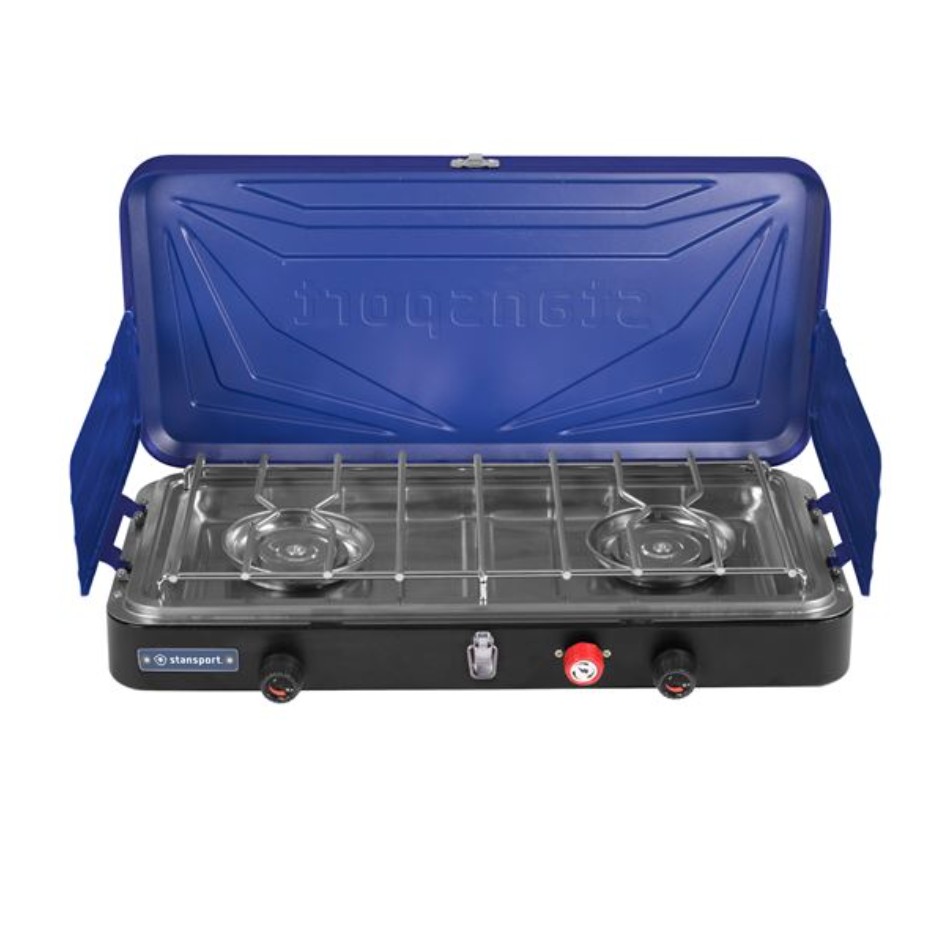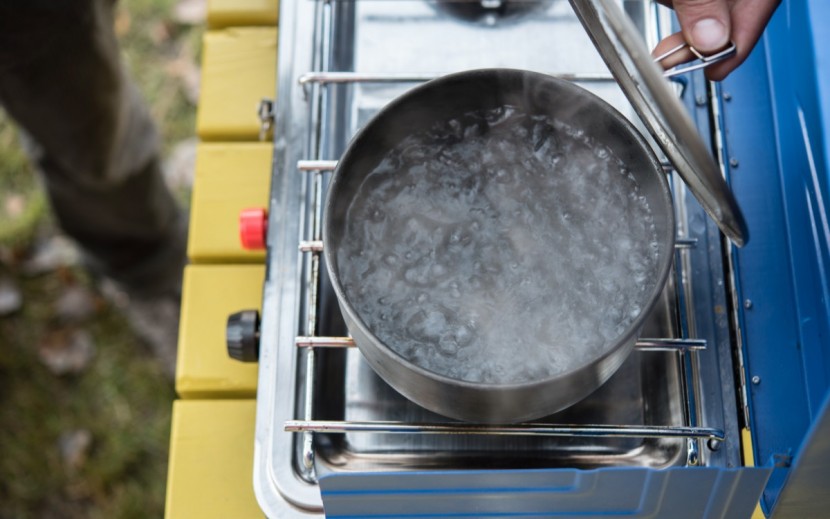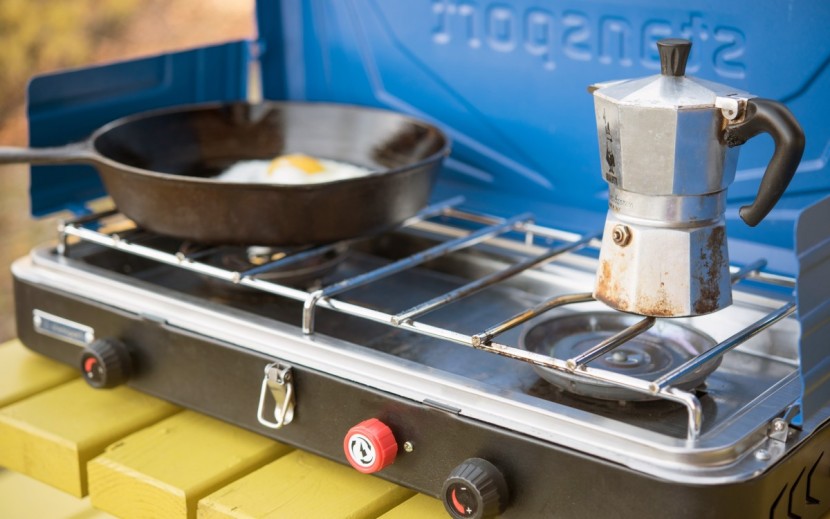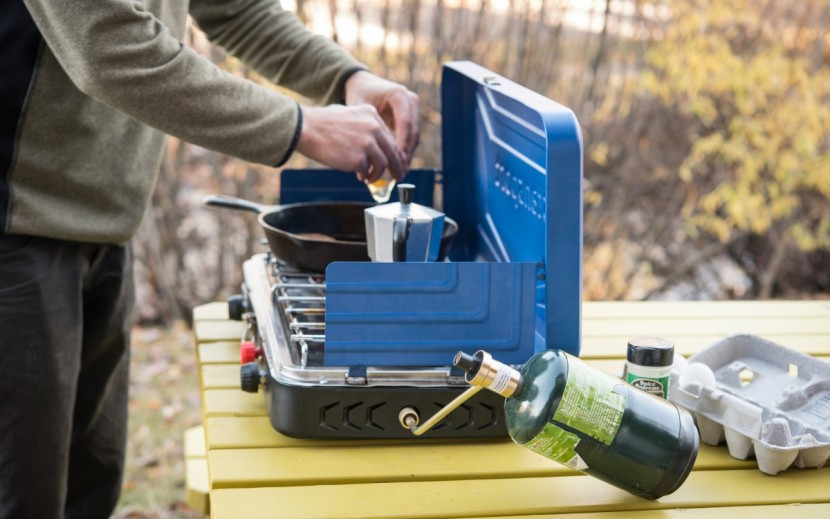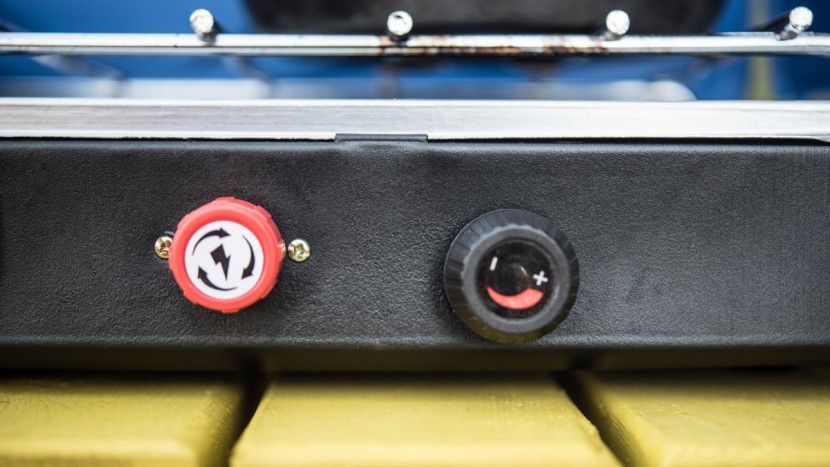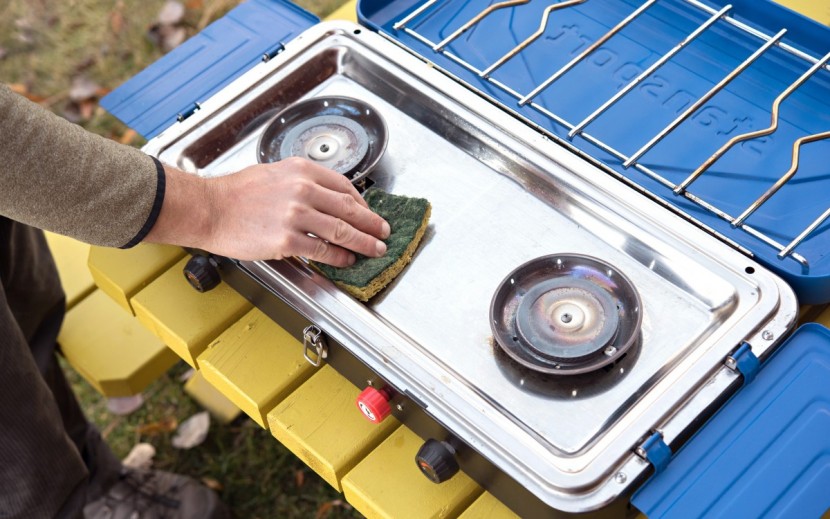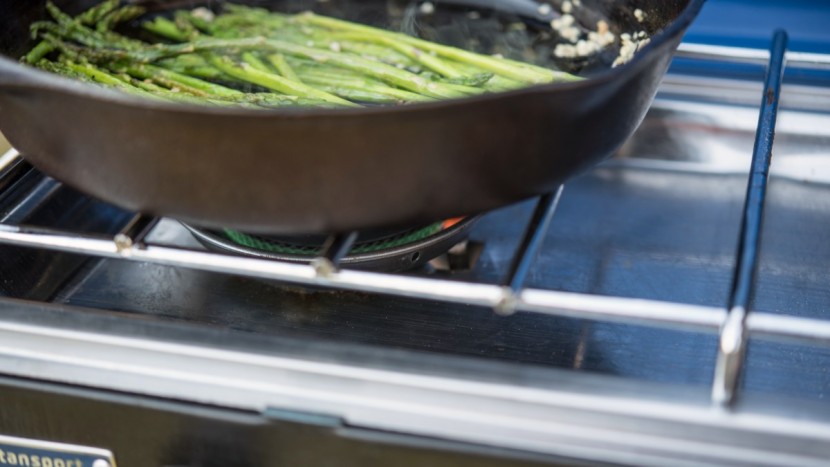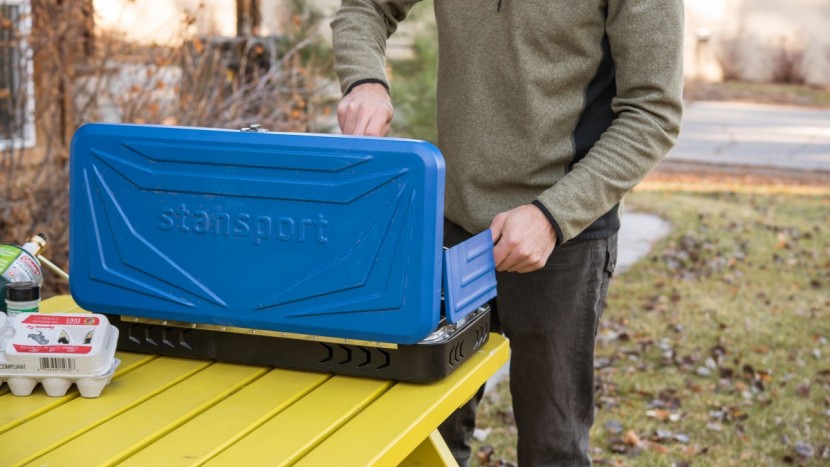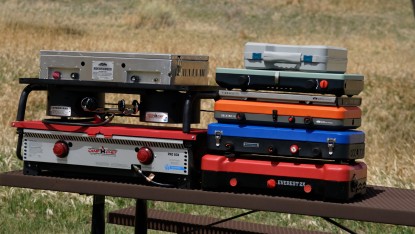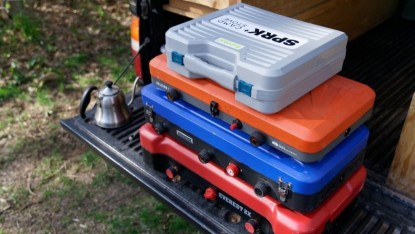Stansport Outfitter Series 2-Burner Review
Our Verdict
Our Analysis and Test Results
This is the most powerful of the compact two-burner stoves we tested. With two 25,000 BTU burners, it packs a punch for its size but also simmers with ease and grace. It has excellent wind resistance, is easy to clean, and is wide enough to fit two full-size pans (10-12"). At full price, it costs $145.
Time to Boil
This stove was the top performer in our boil test, boiling a quart of 60-degree water in 2:30 and a quart of 50-degree water on a cooler, breezier day in 3:30. The Camp Chef Everest was almost identical in this department, only once taking a bit longer than this contender. Close behind these two was the Camp Chef Pro 60.
For reference, the lowest scoring stove for boiling time, the Coleman Butane Instastart took 5 minutes with 60-degree water and 7:15 with 50-degree water.
Simmering Ability
We were consistently impressed with the ability of this stove to simmer effectively and with ease. Not one meal was charred, and it was easy to turn the burner down low without fear of the flame constantly going out. The windscreens and the design of the burners add up to a stove that is as impervious to the wind as a camp stove can be, making low and slow cooking achievable for your camp cookout. This is the only category where the Stansport beat the Camp Chef Everest (they tied in all other areas), and it was only by the very slightest margin. The difference was so subtle that we doubt most people would notice unless they were comparing the two side-by-side as we did.
Other stoves that simmered well were the Eureka Spire LX and the Primus Kinjia. Both of these models require a wide berth of knob rotation to adjust the flame, meaning we never worried that a tiny little turn of the knob would put out our burner. The Spire LX, like the Stansport, also has excellent wind resistance that added to our confidence when simmering.
Group Cooking
The 2-Burner was pretty roomy for a compact stove. At 19 inches, it's a couple of inches wider than almost all of the other compact models we tested, which allowed us to squeeze on two large pans. While it can't compete with free-standing models like the Camp Chef Pro 60 and the Stansport Outdoor Stove, it holds its own as a strong runner-up.
And, if you have the picnic table space to spare, you can always supplement an affordable and competent sidekick like the Coleman Butane Instastart to add in an extra burner.
Ease of Setup
You don't need any fancy instructions or know-how to set up this stove. If you've set up any other compact two-burner stove, then you know the drill. Open the top, flip up and secure the windscreens, attach the propane adapter, and voila! You're good to go. It's not quite as simple a setup as the Coleman Butane Instastart or the Primus Kinjia, in part because of the windscreens, but we'll take the improved wind resistance in exchange for a few extra seconds of setup time any day. And it's by far an easier and lighter assembly experience than the Camp Chef Pro 60.
We did have some issues with getting the metal propane adapter elbow on this stove to catch its threads properly when screwing it into the stove body. It's almost as if the threads were set too far back, so reaching them required pushing the adapter in more than expected or was comfortable.
The piezo ignitor on this Editors' Choice winner is also worth commenting upon. It has a twist ignitor instead of a push button, and there were some pros and cons to this design. The pro is that a twist action doesn't slide the stove backward if you are on a slick surface. The push button ignitors on tabletop stoves often do this, which can be counteracted by bracing the stove with your fingers. That's all fine and good until you're trying to reignite a hot stove and it burns your fingers to do so. The con to the twist ignitor is that it is physically harder to turn, which is what we saw here with the Stansport. The twist ignitor took more finger strength to turn than, say, the Camp Chef Everest push button which is quite easy to depress. It's a small price to pay, however, for the extra BTUs.
Ease of Care
Like setup, if you've had to take care of any other compact two-burner camp stove, this one is no different. Cleaning and maintenance are about as straightforward as it goes.
The cooking grate just lifts up and out to get to the burners and the stainless steel drip tray below, both of which can be easily cleaned with a sponge or steel wool.
Wind Resistance
This stove was definitely above average regarding wind resistance. The design of the burners and the windscreens coupled with the high BTUs added up to a solid cooking experience all around. The tell-tale test was our box fan test. Because you can't predict or schedule the wind, we created our own wind scenario by placing a box fan 24 inches to the side of each stove while trying to boil water. The reason we chose the side is that the back of the stove is already well-protected on most stoves and if the wind is hitting the front you could either block it with your body or turn the stove away so the wind hit the back or sides. So we turned the box fan on low while timing how long it took to boil a quart of 55-60 degree water.
This stove was hardly fazed, clocking in at 2:45, a mere 15 seconds longer than its boil time without the fan. Now, this test surely doesn't tell us everything about wind resistance, but it separated the winners from the losers. For comparison, after 27 minutes of the box fan test the Primus Onja still hadn't boiled and we gave up due to waning fuel. The Coleman Butane Instastart took 21 minutes and the Stansport Outdoor Stove, which brags an astounding 35,000 BTUs per burner, still took 9:30 minutes to complete this challenge.
Packed Size
This model packs down to 23.5 x 11.5 x 4.5 inches, a bit smaller than the Camp Chef Everest. It was a little bit bigger than many of the other stoves tested, but still much more compact than the freestanding models (the Pro 60 and the Stansport Outdoor), and considerably more streamlined than the Coleman Hyperflame Fyrecadet.
There's no loss of performance with this increased portability; we were still able to use two large pots or skillets with no problem. All-in-all this stove was impressive on all fronts.
Best Applications
This Stansport is a great buy for any car camping situation. It's best set up on a table, but it's also fine to set it up on the ground or some stable natural feature (a flat rock, tree stump, etc. really ). It does best for groups of 1-5 people, works well in the wind, and maintains its performance at altitude.
Value
For $145, this a solid deal. It performed better than the other stoves across our rating metrics while a handful of lower-performing models reviewed cost more. You can spend less money on a stove, but you will probably be sacrificing BTUs or cooking space or some other important feature. This is a great balance of performance and price for your car camping adventures.
Conclusion
This is a proud Editors' Choice win for the Stansport 2-Burner, as it beat out the two-time reigning champion, the Camp Chef Everest. Just barely though. These two stoves are very similar, and both are excellent. In the end, the Stansport pulled ahead due to slightly better-simmering ability and higher BTUs. This combination made a subtle but noticeable difference in our overall cooking experience.
We loved the power this stove delivered without sacrificing the ability to cook low and slow. We loved the extra couple of inches in available cook space for large items, yet a great design that also allowed for small cookware. A fun and slightly surly reviewer may have summed it up best when he said: “As a man who is usually pissed off, if I owned this stove, I wouldn't be pissed off.” We certainly weren't.


